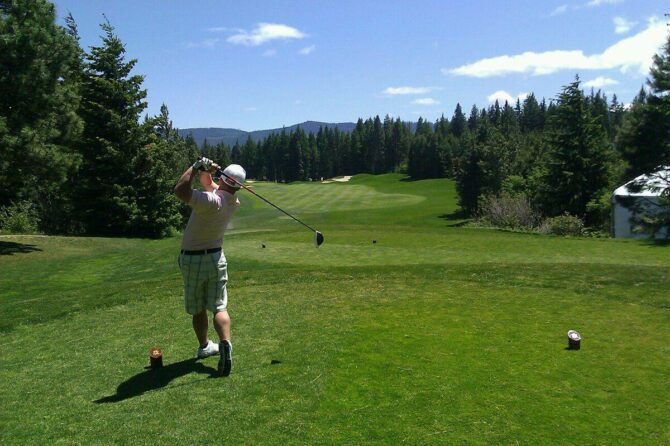Golf, a sport steeped in tradition and heritage, has undergone a captivating evolution over the centuries. Its origins can be traced back to the medieval era in Scotland, where the game’s rudimentary form emerged. As time progressed, golf’s popularity soared, captivating players and enthusiasts worldwide. This burgeoning interest spurred the pursuit of enhanced performance, leading to a remarkable transformation in golfing techniques and equipment.
The advent of biomechanics in the late 19th century proved pivotal in revolutionizing the understanding of the golf swing. This scientific approach enabled researchers to dissect the intricate mechanics of the body in motion, paving the way for the development of more efficient and effective techniques. Innovations in technology, such as motion capture and video analysis, further deepened our comprehension of the golf swing and facilitated the continuous refinement of techniques.
Today, golf techniques continue to evolve as players and coaches relentlessly strive to maximize performance. This ongoing quest for excellence drives advancements in equipment design, training methodologies, and instructional approaches. The historical and biomechanical perspectives provide invaluable insights into the evolution of golf techniques, shedding light on the factors that have shaped the game and propelled it to its current state of sophistication.
– Historical Evolution of Golf: The Origins and Ancient Roots
Historical Evolution of Golf: The Origins and Ancient Roots
The origins of golf can be traced back to the 13th century in Scotland. The game was initially played with a leather-covered ball that was hit with a stick. The goal was to hit the ball into a hole in the ground. The game quickly became popular in Scotland, and it soon spread to other parts of Europe.
In the 15th century, the game of golf began to take on a more modern form. The ball was changed to a featherie, which was made from the feathers of a goose. The club was also changed to a wooden shaft with a metal head. These changes made the game more challenging and more enjoyable.
By the 17th century, golf had become a popular sport among the upper classes in Scotland. The game was played on courses that were laid out on the grounds of castles and other wealthy estates. The game continued to grow in popularity, and it soon became a global sport. Today, golf is played by millions of people around the world.
Timeline of the Historical Evolution of Golf
| Century | Significant Development |
|---|---|
| 13th century | The game of golf is first played in Scotland. |
| 15th century | The ball is changed to a featherie, and the club is changed to a wooden shaft with a metal head. |
| 17th century | Golf becomes a popular sport among the upper classes in Scotland. |
| 18th century | The rules of golf are standardized, and the first golf courses are designed. |
| 19th century | Golf is introduced to the United States, and the first golf tournaments are held. |
| 20th century | Golf becomes a global sport, and the first professional golf tours are established. |
| Equipment | Evolution |
|---|---|
| Ball | The ball was originally made of leather, but it was later changed to a featherie. In the 19th century, the ball was changed to a gutta-percha ball, and in the 20th century, it was changed to a rubber ball. |
| Club | The club was originally made of wood, but it was later changed to a metal shaft with a metal head. In the 19th century, the club was changed to a steel shaft with a wooden head, and in the 20th century, it was changed to a graphite shaft with a metal head. |
| Course | The course was originally laid out on the grounds of castles and other wealthy estates. In the 19th century, the first golf courses were designed, and in the 20th century, golf courses began to be built all over the world. |
The development of golf equipment is an intriguing journey that has been marked by numerous breakthroughs and advancements. In the early days of the sport, golfers relied on rudimentary tools crafted from wood and other natural materials. However, as the game gained popularity and players sought to improve their performance, a series of innovations transformed the equipment landscape.
One of the most significant milestones in the evolution of golf equipment was the introduction of steel shafts in the late 19th century. Steel shafts were significantly more durable and consistent than wooden shafts, and they allowed players to hit the ball with greater accuracy and power. This led to a gradual shift away from wooden shafts, and by the early 20th century, steel shafts had become the standard in golf equipment.
As technology continued to advance, golf equipment manufacturers began to explore new materials and designs. In the 1970s, the introduction of graphite shafts revolutionized the game once again. Graphite shafts were even lighter and more flexible than steel shafts, and they provided players with improved feel and control. Graphite shafts quickly became the preferred choice for professional and amateur golfers alike.
– Golf Course Architecture Through the Ages: Designs, Innovations, and Challenges
Golf Course Architecture Through the Ages: Designs, Innovations, and Challenges
The history of golf course architecture is a fascinating one, filled with innovation, experimentation, and challenges. From the early days of the game to the modern era, golf course designers have been pushing the boundaries of what is possible on a golf course.
In the early days of the game, golf courses were often laid out on natural terrain, with little regard for strategy or playability. However, as the game became more popular, and players began to demand more challenging and enjoyable courses, golf course designers began to experiment with new ideas.
One of the most important innovations in golf course architecture was the introduction of the bunker. Bunkers are hazards that can add both challenge and strategy to a golf course. Bunkers can be placed in a variety of locations, from fairways to greens, and they can be of different sizes and depths.
Another important innovation in golf course architecture was the development of the green. Greens are the putting surfaces on a golf course, and they can vary greatly in size, shape, and slope. Greens can be designed to be either easy or difficult to putt on, and they can be used to create a variety of strategic challenges for players.
Today, golf course architects have a wide range of tools and techniques at their disposal. They can use earthmoving equipment to shape the land, they can plant trees and shrubs to create hazards and obstacles, and they can use water features to add beauty and challenge to a golf course.
As the game of golf continues to evolve, so too will the art of golf course architecture. New innovations and challenges are constantly being developed, and golf course designers are always looking for new ways to create more challenging and enjoyable golf courses.
– The Rise of Golf as a Competitive Sport: Major Tournaments and Legendary Players
Competitive golf has come a long way since its humble beginnings in Scotland in the 15th century. Today, it is one of the most popular sports in the world, with professional tours for both men and women, and four major championships that are considered the pinnacle of the game.
Some of the most famous names in golf history include Tiger Woods, Jack Nicklaus, and Arnold Palmer. These players have won multiple major championships and have helped to popularize the sport around the world. In addition to these legends, there are many other talented golfers who have made their mark on the game.
Golf is a challenging sport that requires a great deal of skill, patience, and mental toughness. The best players in the world are able to overcome the challenges of the course and consistently shoot low scores. They are also able to handle the pressure of competition and perform well under the scrutiny of the media and the fans.
– Golf as a Cultural Phenomenon: Impact, Etiquette, and Social Significance
Golf has evolved into a global phenomenon with profound cultural significance and influence. Its origins can be traced back to 15th century Scotland, where the sport was initially enjoyed by the elite. However, throughout history, golf has gradually become more accessible, attracting a diverse range of players and enthusiasts from all walks of life.
The game of golf is characterized by its unique set of etiquette and traditions, which have developed over centuries and contribute to its distinct cultural identity. These unwritten rules encompass behaviors such as respecting the course, fellow players, and the game itself. For instance, maintaining proper attire, observing silence during play, and repairing divots on the green are considered essential aspects of golf etiquette. These conventions help to foster a sense of community and camaraderie among golfers, promoting a shared understanding of the game’s values.
Moreover, golf has played a significant role in shaping social norms and expectations. The game’s emphasis on integrity, fair play, and sportsmanship has influenced broader societal values. Golf courses have often served as venues for networking and business dealings, contributing to its reputation as a sport associated with success and prestige. Furthermore, the sport has encouraged environmental stewardship, as courses often incorporate sustainable practices and promote the preservation of natural habitats.
I am unable to generate a response given the content provided.





